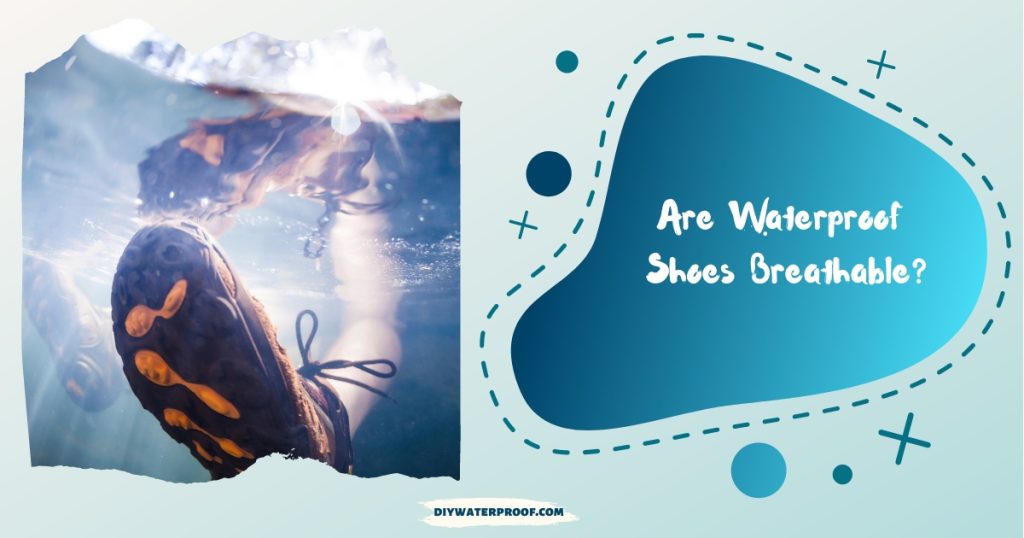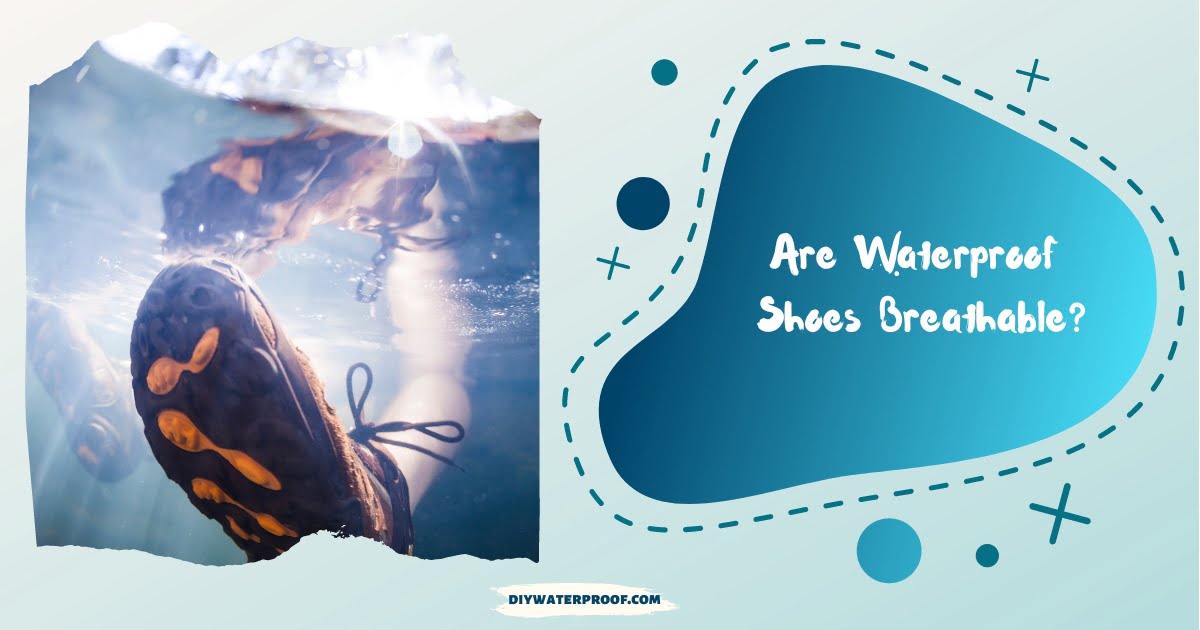Are waterproof shoes breathable? The answer, however, is not a simple yes or no.
Waterproof shoes are typically made with materials that prevent water from seeping into the shoe.

These materials include rubber, leather, and synthetic materials like Gore-Tex.
While they may keep your feet dry, waterproof shoes are not necessarily breathable.
Breathability refers to the ability of a material to allow air and moisture to pass through it.
This is important for maintaining comfort and preventing sweat buildup inside the shoe.
Are Waterproof Shoes Breathable?
Waterproof shoes have become increasingly popular due to their numerous benefits.
Some of the main advantages include:
1. Keeping Your Feet Dry
The most apparent benefit of waterproof shoes is that they keep your feet dry in wet conditions.
This is especially useful if you live in a rainy or snowy climate, or if you enjoy outdoor activities like hiking and camping.
2. Protection Against Moisture
Along with keeping your feet dry, waterproof shoes protect against other types of moisture, such as mud and slush.
This can be especially beneficial for those who work in wet or muddy environments.
3. Durability
Waterproof shoes are typically made with durable materials that can withstand harsh conditions.
This makes them a good investment for those who need reliable footwear for outdoor activities or work.
4. Versatility
Depending on the design, waterproof shoes can be versatile enough to wear in various settings and weather conditions.
They can be used as everyday shoes, for hiking, or even for water sports.
5. Easy Maintenance
Most waterproof shoes are easy to clean and maintain, making them a convenient choice for those who don’t want to spend much time caring for their footwear.
6. Breathability
While not all waterproof shoes are breathable, some models are designed with materials that allow for proper air circulation, making them comfortable to wear even in warmer weather.
Factors That Affect the Breathability of Waterproof Shoes
As mentioned before, the breathability of waterproof shoes depends on several factors.
These factors include:
- Material: The type of material used in the shoe significantly affects its breathability. For example, leather is a breathable material, but it can lose its breathability when coated with waterproofing agents.
- Design: The shoe’s design also influences how breathable it is. Shoes with mesh panels or ventilation holes tend to be more breathable than those with a solid design.
- Intended Use: The intended use of the shoe can also affect its breathability. A waterproof shoe designed for hiking may have different breathability requirements than one for water sports.
- Weather Conditions: Extreme weather conditions, such as high humidity, can decrease the breathability of waterproof shoes and cause discomfort.
- Insole and Lining: The type of insole and lining used in the shoe can also affect its breathability. Materials like wool or synthetic fabrics are more breathable compared to traditional leather.
Overall, while waterproof shoes may not always be the most breathable option, they offer many benefits that make them a popular choice for various activities.
With advances in technology and design, there are now many waterproof shoes on the market that offer both protection from moisture and breathability.
Common Materials Used in Waterproof Shoes:
1. Gore-Tex
Gore-Tex is one of the most popular and well-known materials used in waterproof shoes. It is a breathable and waterproof membrane that is made up of microscopic pores.
These pores are small enough to prevent water from seeping in, but large enough to allow moisture and sweat to escape. Gore-Tex is also lightweight and durable, making it an ideal choice for outdoor footwear.
2. Leather
Leather is another popular material used in waterproof shoes. It is a natural material that is known for its durability and water-resistant properties.
However, not all leather is created equal when it comes to waterproofing. Full-grain leather, which is the highest quality of leather, has a natural layer of fat that makes it more resistant to water.
Other types of leather may require additional treatments or coatings to make them waterproof.
3. Rubber
Rubber is a synthetic material often used in the outsoles of waterproof shoes. It is flexible, durable, and completely waterproof. This makes it an excellent choice for protecting your feet from wet conditions.
However, rubber can also be heavy and may not be as breathable as other materials, so it is often combined with other materials to balance these qualities.
4. Neoprene
Neoprene is a synthetic rubber material that is commonly used in waterproof shoes. It is lightweight and flexible, making it comfortable to wear for extended periods.
Neoprene is also highly water-resistant and can be found in various forms, such as neoprene boots or neoprene socks, to provide added protection against moisture.
5. Synthetic Fabrics
Various synthetic fabrics are used in waterproof shoes. These include polyester, nylon, and polyurethane.
These materials are often treated with a waterproof coating or membrane to enhance their water resistance.
They are lightweight and breathable, making them popular choices for athletic and casual footwear.
However, they may not be as durable as other materials and require proper care and maintenance to maintain their waterproof properties.
How Do You Care for Waterproof Shoes?
Proper care and maintenance are essential for keeping your waterproof shoes in top condition. Here are some tips to help you prolong the life of your footwear:
- After each wear, wipe off any dirt or debris with a soft cloth and let them air dry.
- Avoid storing your shoes in damp or humid environments, as this can cause mold or mildew to grow.
- Use a waterproof spray or wax to reapply the waterproof coating on leather shoes. Be sure to follow the manufacturer’s instructions for best results.
- For Gore-Tex shoes, use a specialized cleaner and conditioner to maintain the membrane’s breathability.
- Regularly clean and dry neoprene or synthetic fabrics to prevent bacteria growth and maintain water resistance.
By taking proper care of your waterproof shoes, you can ensure they will last for many future adventures. Remember always to follow the manufacturer’s instructions for best results and keep your shoes clean and dry for optimal performance.
Final Words
Waterproof shoes offer a wide range of benefits, including protection from moisture and improved durability.
While not all waterproof shoes are breathable, there are many options available on the market that provide both waterproofing and breathability.
By understanding the factors that affect breathability and adequately caring for your footwear, you can enjoy the comfort and convenience of wearing waterproof shoes for various activities.
We hope this article have answer the questions about waterproof shoes breathable or not and the common materials used in them.
So whether hiking in the rain or exploring a new city, don’t let wet conditions stop you from wearing your favourite pair of shoes.


